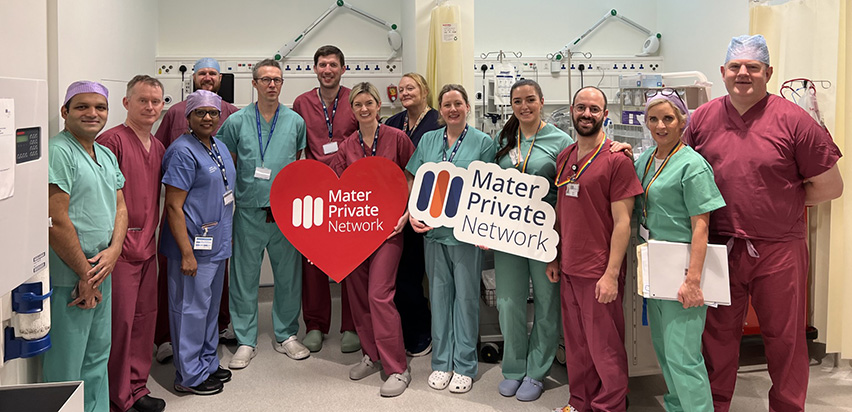Angioplasty Coronary Stenting
Contact Us
Please note a referral letter is required before an appointment can be confirmed.
Please note a referral letter is required before an appointment can be confirmed.
Useful Information
About this service
Angioplasty is a specialist treatment which opens narrowed or blocked coronary (heart) arteries. Coronary stenting is the placement of an expandable mesh tube - a stent - into a narrowed artery to permanently hold it open to improve blood flow.
The procedure
Angioplasty is used to treat a type of heart disease known as atherosclerosis, the build-up of fatty plaques in your heart's blood vessels. Your doctor might suggest angioplasty as a treatment option when medications or lifestyle changes aren't enough to improve your heart health.
The procedure takes approximately 40 – 60 minutes.
During the procedure
During an angioplasty a small balloon is inflated from inside a narrowed or blocked artery to widen it. The balloon widens the artery by squashing the fatty plaque causing the narrowing or blockage. You will be awake during the angioplasty but will receive sedation to help you relax.
Accessing the artery
The doctor will access the artery starting either in the groin or the wrist area. The area is numbed using a local anaesthetic and an incision is made through which a needle is inserted into the artery. A catheter (a plastic coated wire) is passed over this needle and gently pushed up to the area of the blocked or narrowed artery.
Widening the artery
Once the first catheter is in place, a second (thinner) catheter with a tiny balloon on the tip is pushed up through the centre of the first catheter. When it reaches the blocked or narrowed area, the balloon is gently inflated several times to widen the artery. You may feel chest pain while the balloon is being inflated; this usually disappears after the balloon is deflated.
The balloons, catheters and wires are all carefully removed and the incision site is closed.
The procedure
The procedure takes approximately 40–60 minutes.
This procedure is similar to an angioplasty. However, during a coronary stent procedure, a stent is implanted into the artery and left there to keep it permanently open. Some stents are coated with drugs to help prevent or slow down the build-up of plaque again in the artery.
Accessing the artery
The doctor will access the artery starting in either the groin or the wrist area. The area is numbed using a local anaesthetic and an incision is made through which a needle is inserted into the artery. A catheter (a plastic coated wire) is passed over this needle and gently pushed up to the area of the blocked or narrowed artery.
Implanting the stent
Once the first catheter is in place, a second (thinner) catheter with a tiny balloon on the tip is pushed up through the centre of the first catheter. The stent is placed on the tip of this balloon. When the balloon reaches the narrowed area it is inflated to expand the stent and embed it in the wall of the artery. You may feel chest pain while the balloon is being inflated; this usually disappears after the balloon is deflated.
The stent remains in place and the balloons, catheters and wires are removed. The incision site is then closed.
Strict bed rest is required for six to eight hours or as directed by your doctor.
If your incision is in the groin, you will need to limit your movement and you must not sit up. This will reduce the risk of bleeding.
- You will be attached to a heart monitor for several hours.
- You will have frequent pulse and blood pressure checks.
- The incision will be checked regularly for bleeding.











